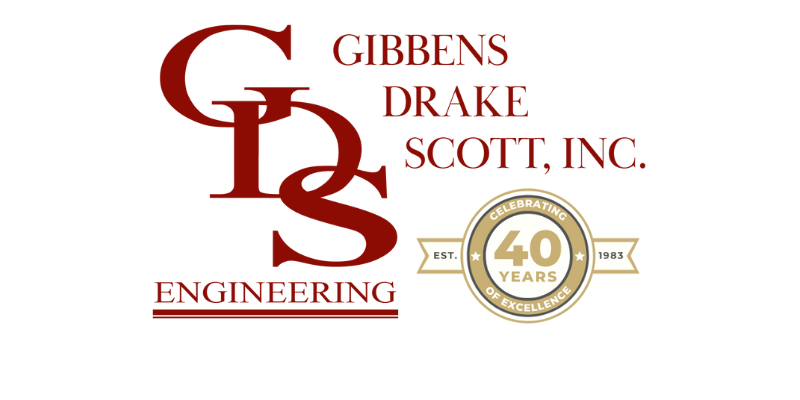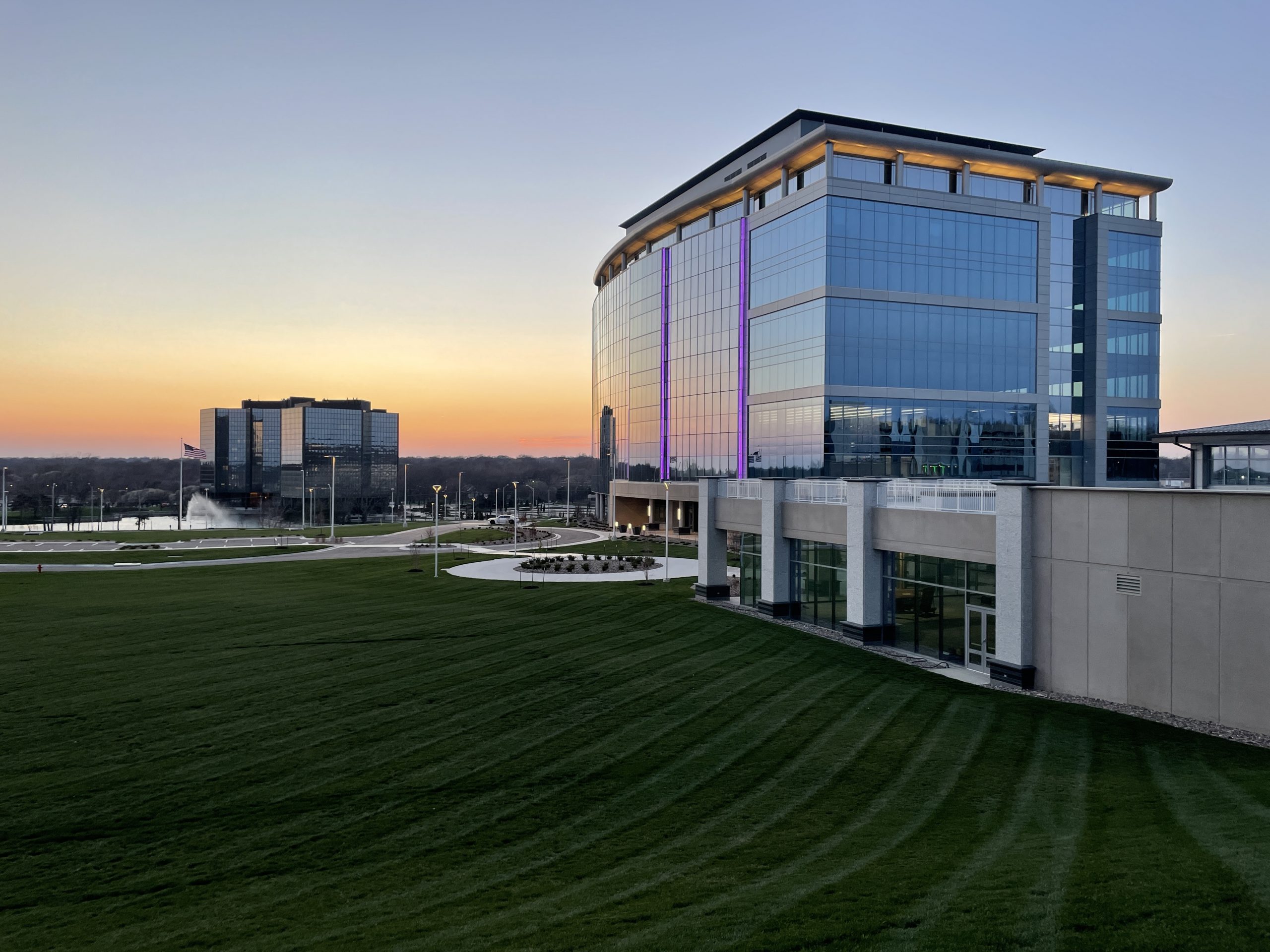Seven glowing lines extend up Shamrock Trading Corporation’s new tower in Overland Park, KS.
Wash Your Hands!

Hot Water Recirculation – HW Distribution Pipe Lengths
Why Worry About HW Recirculation?
So, we have all been standing in a public restroom waiting to wash our hands. We place our hands under the faucet, to be greeted with cold water. At best, several seconds later, the water may finally get somewhat warm. At worst, the water stays cold.
Convenience – From a convenience standpoint, it is just flat out frustrating to be waiting for a long period of time to get warm water.
Environmental – From an environmental standpoint, it is a waste of resources to run the water for minutes while waiting for warm water.
Health – From a health standpoint, warm water is required for proper hand-washing (and several other cleaning applications)1. In addition, in order to mitigate legionella propagation, the hot water temperatures should be maintained within hot water heaters and the associated hot water piping systems. Allowing those systems to cool results in a breeding ground for legionella.
A properly designed hot water system, which very often includes hot water recirculation, ensures hot water is available when needed and reduces potential health hazards.
When is HW Recirculation Required – What Do the Codes Say
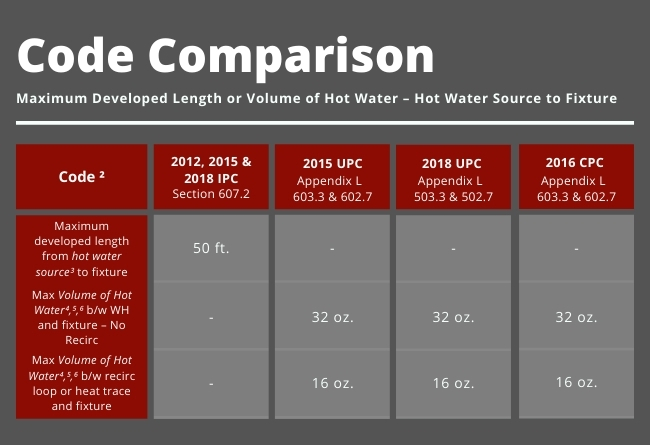
The 2012, 2015, and 2018 IPC allow 50 ft. total developed length of pipe from hot water source to fixture. This means a fixture requiring hot water is allowed to be up to 50 ft. away (total developed length of pipe) from a hot water recirculation loop or a heat traced line. This also means if the water heater is close enough to the fixture requiring hot water (within 50 ft. total developed length of pipe), no hot water recirculation or heat trace is required by code. It is important to note, however, that code minimums do not always translate into optimal design.
Meanwhile other codes such as the 2015 UPC, 2018 UPC and 2016 CPC have now taken a stricter stance. These codes limit the volume of water between the hot water source and fixture. In a system without recirculation 32 oz. water is allowable. In a system with recirculation or heat trace, the maximum allowable volume is 16 oz.
Example: Determine Maximum Length allowed by Code between HW source and Fixture – Volume Based Code
Governing Code: 2016 CPC
Problem:
The HW main is recirculated. If we need to branch off the main to serve a fixture, will an additional hot water recirculation loop be required to serve the branch?
- Use table to determine oz/ft of pipe (see footnote 7 below)
1/2“ Type L copper → 1.55 oz/ft - Calculate max length based on oz/ft and max volume allowed by code
Max Volume allowed by code between recirc. loop or heat trace and fixture → 16 oz
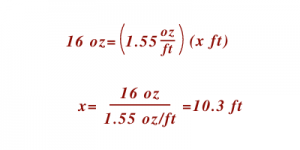
Footnotes
- 2018 IPC Section 607.1
“In residential occupancies, hot water shall be supplied to plumbing fixtures and equipment utilized for bathing, washing, culinary purposes, cleansing, laundry or building maintenance. In nonresidential occupancies, hot water shall be supplied for culinary purposes, cleansing laundry or building maintenance purposes. In nonresidential occupancies, hot water or tempered water shall be supplied for bathing and washing purposes.” - The 2012 UPC is excluded from this table because it only gives hot water volume limitation for Low Rise Residential construction. The later codes extend the hot water volume limitations to include other types of construction.
- 2012 IPC section 607.2 Recirculating System Piping and Heat Traced Piping are considered hot water sources.
- 2015 UPC Appendix L – Table L602.7 Water Volume for Distribution Piping Materials gives the oz. water per foot length of pipe for various piping materials. This table must be used to calculate the volume of water for the purpose of determining code compliance.
- 2016 CPC Appendix L – Table L602.7 Water Volume for Distribution Piping Materials gives the oz. water per foot length of pipe for various piping materials. This table must be used to calculate the volume of water for the purpose of determining code compliance.
- 2018 UPC Appendix L – Table L502.7 Water Volume for Distribution Piping Materials gives the oz. water per foot length of pipe for various piping materials. This table must be used to calculate the volume of water for the purpose of determining code compliance.
- Water Volume for Distribution Piping Materials (referred to in Notes 4,5,6 above)
WATER VOLUME FOR DISTRIBUTION PIPING MATERIALS
OUNCES OF WATER PER FOOT LENGTH OF PIPING
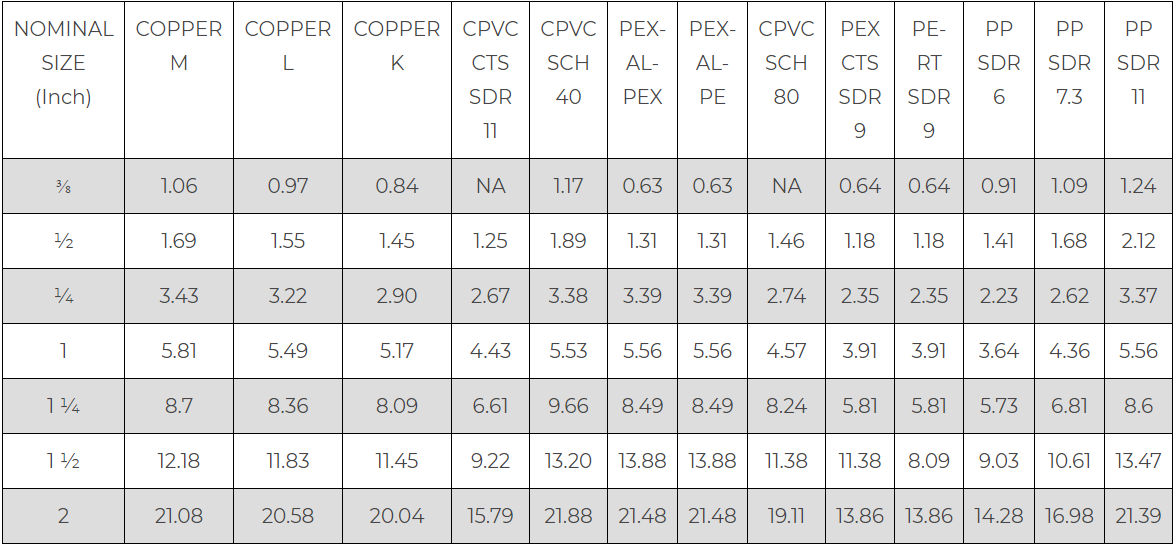
Written by:
Chaesaré Jones, PE, LEED AP
Mechanical Engineer
